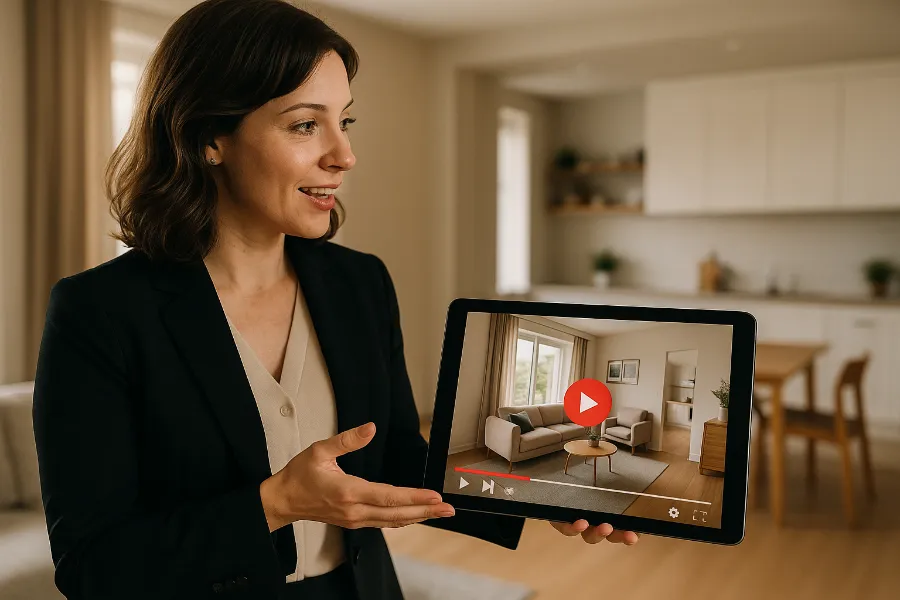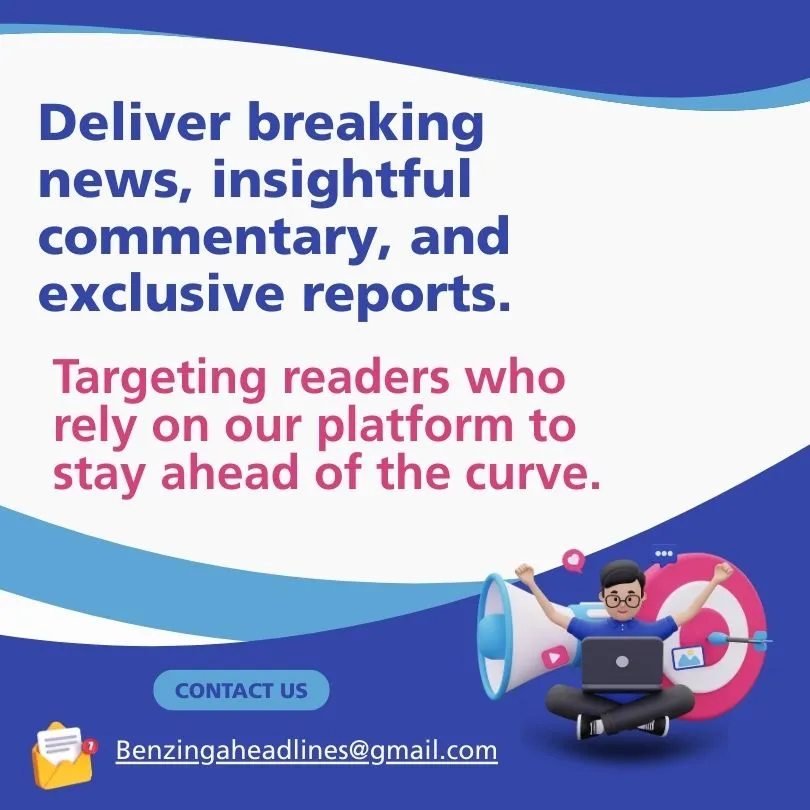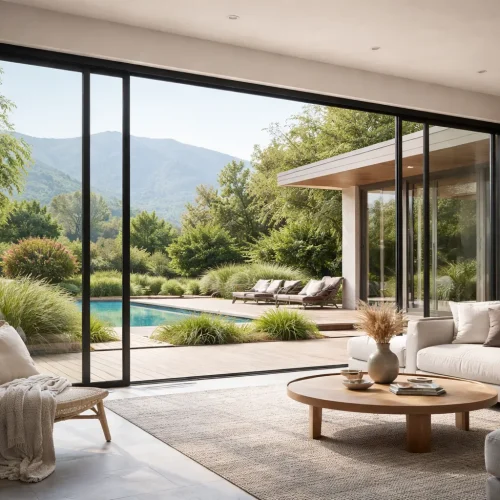
Walk into any real estate office today, and you’ll notice something different from ten years ago. Gone are the days of simple classified ads with grainy photos and bare-bones descriptions. Instead, you’ll find agents crafting elaborate visual narratives that don’t just show properties – they tell stories that make potential buyers fall in love before they even step through the front door.
This transformation isn’t just about prettier marketing materials. It’s about understanding a fundamental truth: people don’t buy houses; they buy dreams, lifestyles, and futures. Visual storytelling has become the bridge between cold market data and emotional connections that drive purchasing decisions.
Why Stories Sell Better Than Specifications
Here’s something most agents discover the hard way: listing square footage and bedroom counts doesn’t sell homes. Stories do. When someone sees a cozy reading nook bathed in morning sunlight rather than just “built-in seating,” they’re already imagining themselves curled up with a book and coffee.
The numbers back this up dramatically. Listings with descriptive, keyword-rich property descriptions sell 23% faster than their generic counterparts. But here’s where it gets really interesting – when you combine compelling descriptions with high-quality visual content, the impact multiplies exponentially.
Professional photos increase the perceived value of a property for 83% of buyers, while listings with professional photos sell 32% faster than those without. But the real magic happens when those images work together with narrative elements to create what marketing professionals call “lifestyle visualization.”
Smart agents understand that modern property marketing requires comprehensive 3d rendering services that go beyond traditional photography to create immersive experiences that tell complete stories about how life unfolds in each space.
The Emotional Connection Factor
Real estate has always been an emotional purchase, but visual storytelling amplifies those emotions in unprecedented ways. As real estate mogul Barbara Corcoran puts it, “Buyers decide in the first eight seconds of seeing a home if they’re interested in buying it.”
Those eight seconds aren’t spent calculating cost per square foot – they’re spent feeling something. The question is: what story are your visuals telling in those crucial moments?
From Features to Feelings
Traditional marketing focuses on what a property has:
- Three bedrooms
- Two bathrooms
- Updated kitchen
- Large backyard
Visual storytelling focuses on what a property offers:
- Peaceful mornings in the master suite
- Family gatherings around the kitchen island
- Summer barbecues under the oak tree
- Cozy evenings by the fireplace
This shift from features to feelings isn’t just marketing fluff – it’s a strategic response to how buyers actually make decisions. Research shows that 73% of homeowners prefer to list with agents who use video marketing, precisely because video excels at conveying the emotional aspects of a property that static photos simply cannot capture.
The most successful agents create visual narratives that help buyers imagine their own stories unfolding in each space. They understand that selling a home isn’t about showcasing what’s there – it’s about inspiring visions of what could be.
Digital Marketing Revolution in Real Estate
The statistics tell a compelling story about how dramatically the industry has shifted toward digital-first marketing approaches. Real estate agents now allocate 54.2% of their marketing budgets to digital marketing, with that percentage expected to climb to 58.6% by the end of the year.
This digital transformation has fundamentally changed how properties are discovered, evaluated, and purchased. Over 90% of real estate agents now use social media for their business, with Facebook leading the charge at 97% adoption among agents.
But here’s what separates successful agents from the pack: they understand that social media isn’t just about posting pretty pictures. It’s about creating cohesive visual narratives that span multiple platforms and touchpoints throughout the buyer’s journey.
Social Media and Visual Content
The power of visual content on social media platforms is undeniable. Social media posts with videos generate 1,200% more shares than text and image content combined. For real estate professionals, this translates into unprecedented reach and engagement opportunities.
Consider these compelling statistics:
- Listings with video get 49% more qualified leads
- Video walkthroughs increase buyer confidence by 28%
- Properties marketed with 3D tours receive 87% more views compared to those without
- Real estate listings that include at least one video get 400% more inquiries
Instagram has become particularly crucial for property marketing, with 77% of real estate agents using the platform to showcase properties. The visual nature of Instagram aligns perfectly with real estate’s inherently visual product, but success requires more than just posting photos.
The most effective agents use Instagram to create mini-documentaries about their listings. They show the morning light streaming through the kitchen windows, the cozy evening ambiance in the living room, and the potential for entertaining in the backyard. Each post contributes to a larger narrative about the lifestyle the property enables.
Measuring the Impact of Visual Narratives
The shift toward visual storytelling isn’t just a creative trend – it’s a data-driven response to measurable market changes. The numbers consistently demonstrate that comprehensive visual marketing strategies deliver superior results across every metric that matters.
Listings with video generate 403% more inquiries than those without. That’s not a typo – it’s a four-fold increase in buyer interest simply by incorporating video elements that tell the property’s story more completely.
The financial impact extends beyond just increased inquiries. Brokers and sales agents who use video grew sales 49% faster than those who don’t. For individual agents, this translates directly into higher income and faster inventory turnover.
But perhaps most importantly, buyers themselves are driving this demand for visual storytelling. Research shows that 58% of buyers expect to see video tours on all listings, while 51% of home buyers rely on YouTube to help them with their home search.
The expectations have shifted permanently. Buyers spend 5-10 times longer on websites with video tours than those without, indicating that visual narratives aren’t just nice-to-have features – they’re essential tools for capturing and maintaining buyer attention in an increasingly competitive marketplace.
Conclusion
Looking ahead, the integration of emerging technologies like drone photography, virtual reality tours, and AI-powered personalization promises to make visual storytelling even more powerful. Properties with drone photography are 68% more likely to sell faster, while virtual and augmented reality technologies are beginning to enable completely immersive property experiences.
The agents who thrive in tomorrow’s market will be those who master the art of visual storytelling today. They’ll understand that every image, every video, and every virtual tour is an opportunity to help potential buyers envision their future lives unfolding in beautiful, compelling ways.
Success in modern property marketing isn’t about having the best properties – it’s about telling the best stories about the properties you have. And in a visual world, those stories are increasingly told through images, videos, and immersive experiences that transform casual browsers into emotionally invested buyers.












